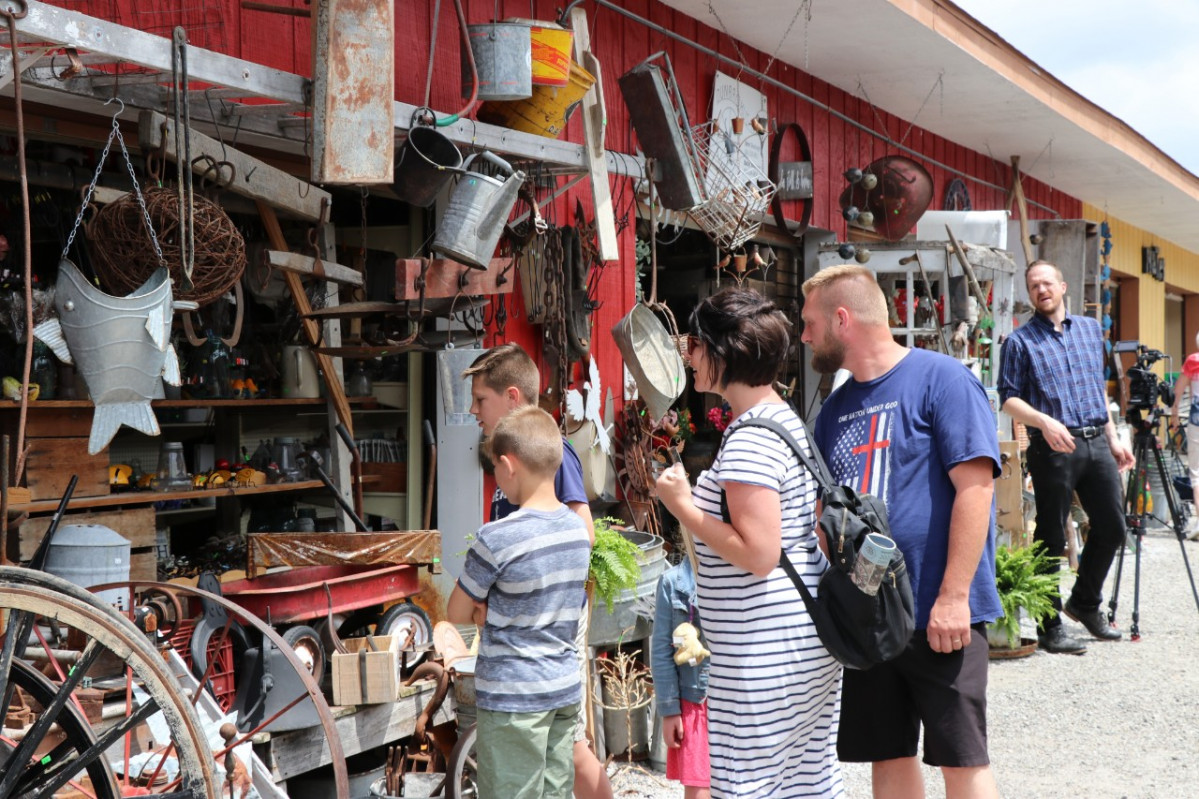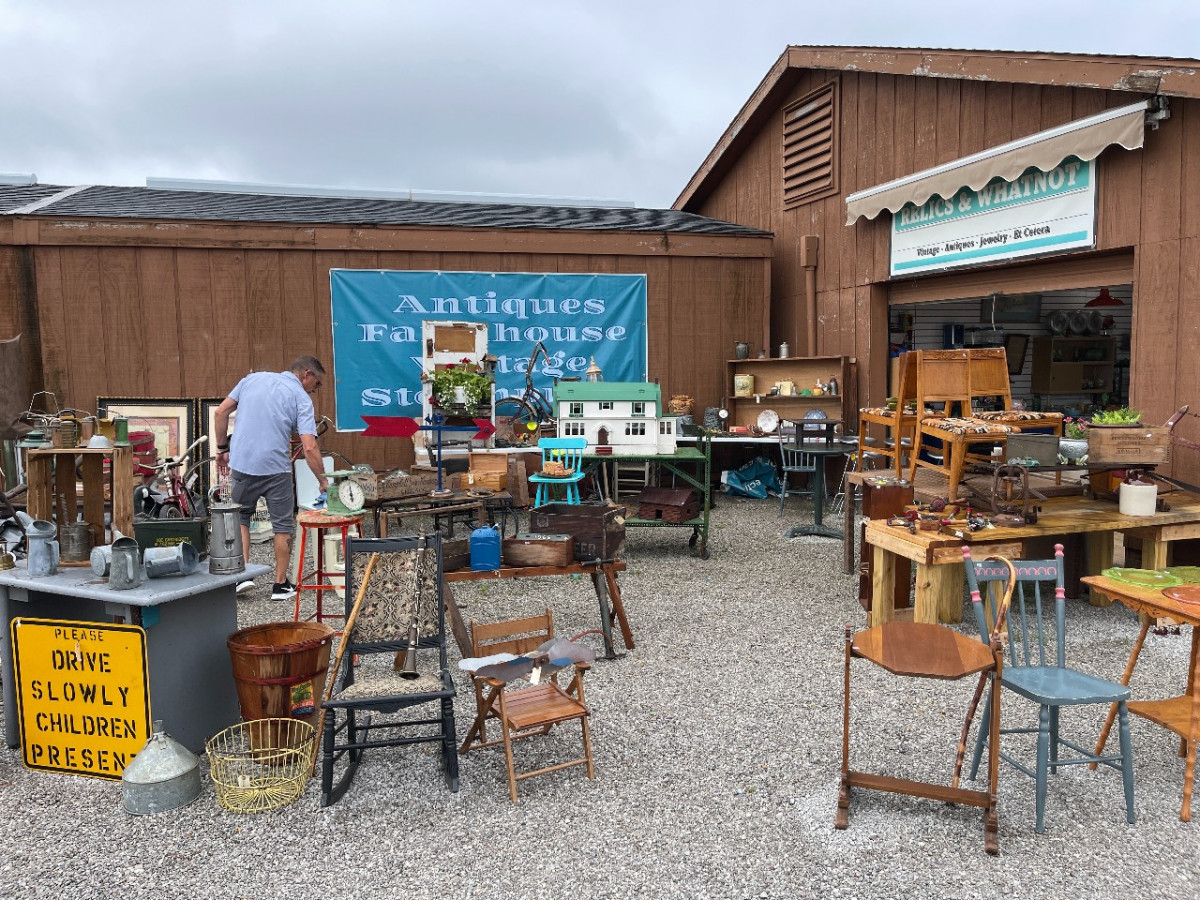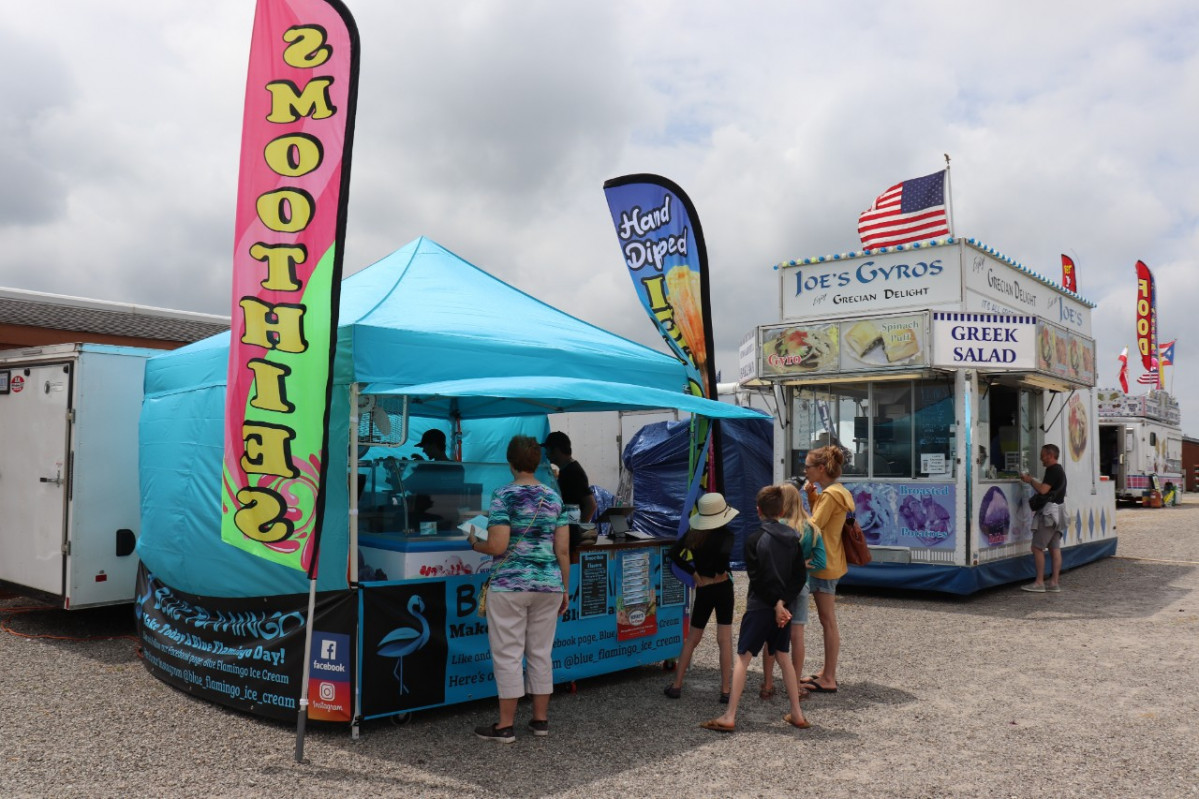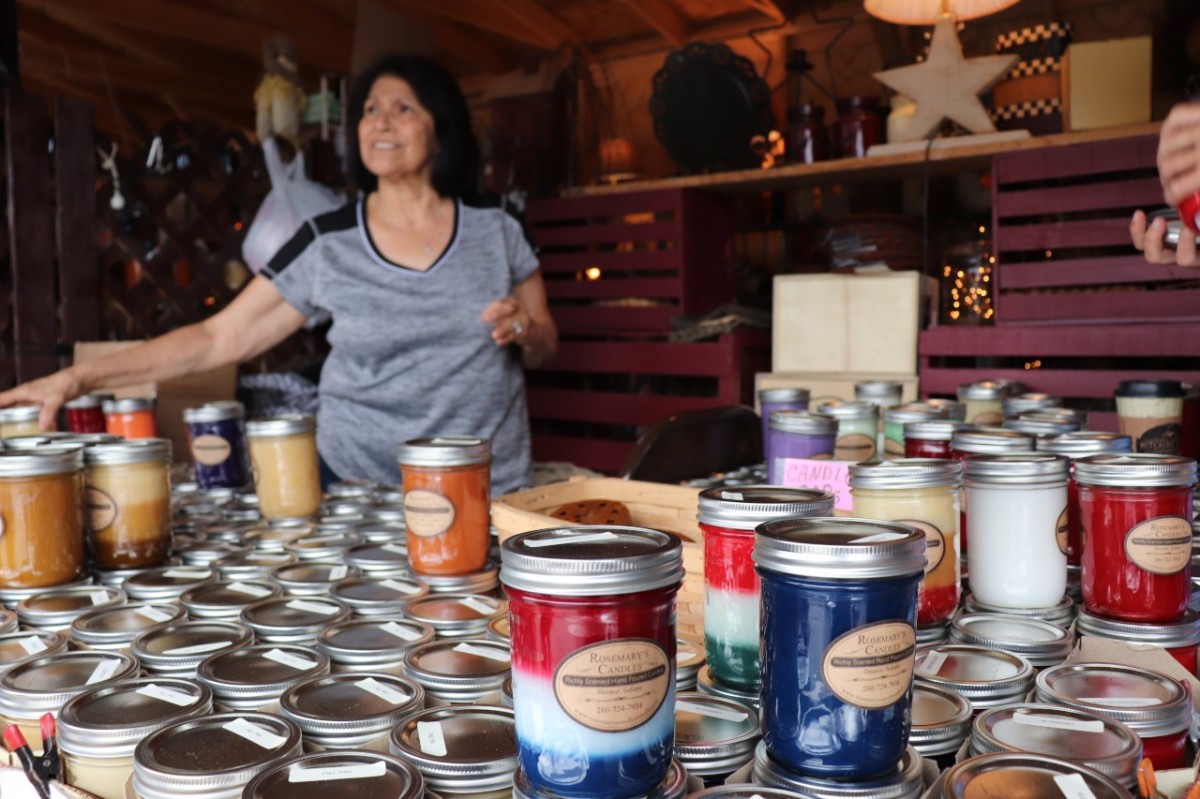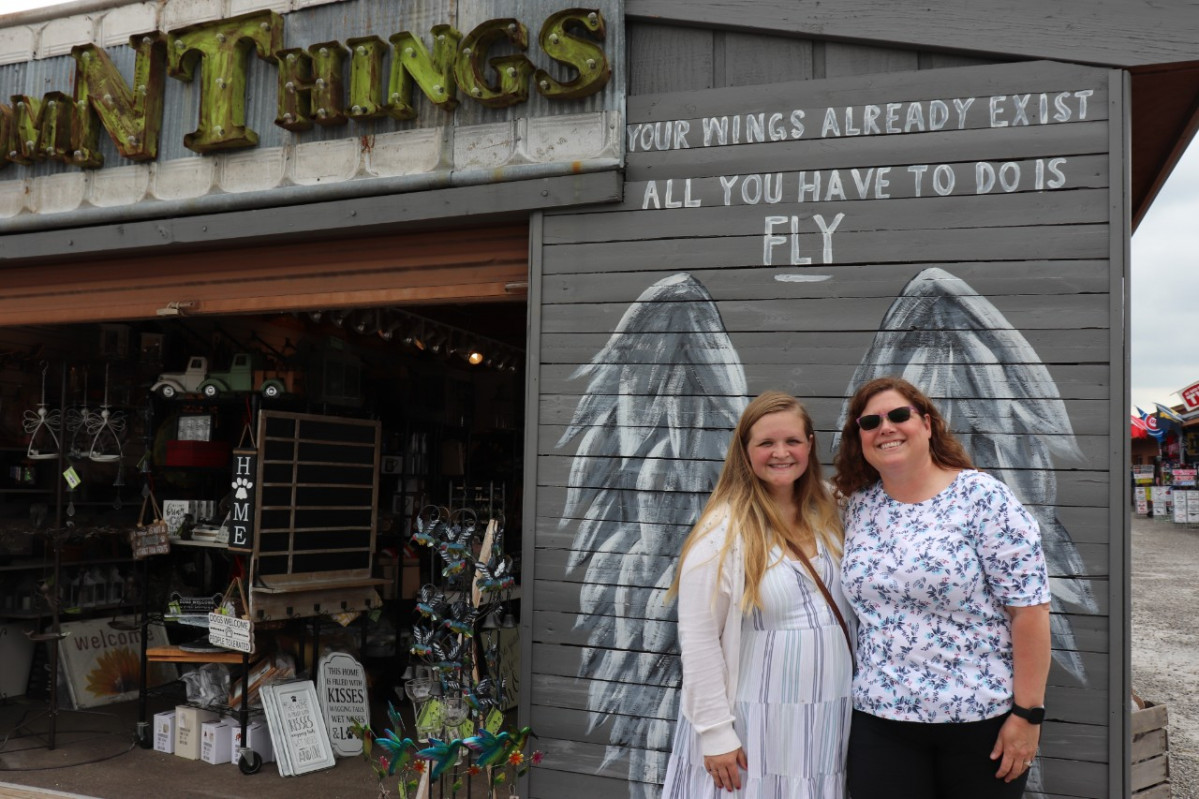Numerous outside factors can contribute to a small business failure when selling at a flea market. However, there are a few common mistakes I see flea market vendors make that contribute to an unsuccessful business.
It happens every summer.
New vendors come out to make it big at the Shipshewana outdoor flea market. They have high hopes at the start about making tons of money and growing their business. However, by the next week, they’ve pulled out.
It breaks my heart to see these wonderful vendors leave because they bring such a variety and freshness to our market.
So, why does this happen?
Our flea market definitely brings in the crowds (nearly 10,000 – 15,000 shoppers come to the Shipshewana Flea Market per week). So why do some flea market vendors succeed and why do others fail?
1. They Don’t Adapt To What Sells At Flea Markets
I know the feeling. You have a product that, at the beginning of your business, was selling really well. Or maybe it’s a product you made by hand and absolutely love. However, lately, it hasn’t been doing so hot. If you expect all your sales to stay consistent over time and you aren’t paying attention to what currently sells at flea markets, your business will fail.
One of the best ways to adapt your merchandise is simply listening to your customers. Is there a particular item they keep asking you for that you don’t have?
Remember when adult coloring books became a thing? One of our flea market vendors called “Pine Corner Merchandise” said that before most people even knew what those coloring books were, they received three different requests for them in just one market day. The vendor listened, did some research, and ordered a small supply of the books to fill just one rack. They sold out in a couple of hours. Adult coloring books later became one of their best-selling items. This is a great example of listening to current flea market trends and quickly acting upon them.
Vendors who get too comfortable or refuse to adapt their product line might be worried about losing loyal customers who are used to their old products. However, if you want business growth, make sure you have inventory that produces profit. Don’t be afraid to try selling something new, even if you’re unsure how it will sell. Who knows? It could generate most of your sales.
2. They Give Up To Soon
I get it. First impressions are everything. However, judging an entire market based on a single day’s worth of sales is a bad choice.
Most markets, especially here in Shipshewana, have good and bad days depending on the weather, the time of month, holidays, and various other factors. Vendors who succeed at selling at flea markets take the time to get to know the area’s customers. Then, they adapt their flea market merchandise or selling strategy accordingly.
Rick Hundt, owner of Hundt No More Antiques & Collectibles and a Shipshewana Flea Market vendor since 2016, almost gave up when he first started selling here. However, the other vendors and the market management encouraged him to stay until Memorial Day. So he did. He also decided to switch up the items he sold to fit the customers. He began offering more shabby-chic and repurposed furniture. Well, come July, Rick was doing enough business in Shipshewana that he could stop doing additional weekend shows to supplement the Tuesday and Wednesday market. You can read more about Rick’s story in our vendor case study.
It is tempting to give up after a bad day. But try to look at the bigger picture. Make some adjustments and don’t be afraid to ask for help from other more seasoned vendors. You might get some great tips and flea market booth ideas.
3. They Don’t Come Prepared
There’s hardly anything worse than going to set up at a market without having a clue of what it is like. Make sure you do your homework before starting to sell.
For example, consider asking these 5 questions before selling at a flea market. You can also scout the market by taking notes on what kinds of products are being sold, typical prices, and average customer demographics. Also, take note of traffic flow patterns to determine where you may want your booth. Once you’ve decided to try out selling at the market, go ahead and reserve a spot if possible and pay for it in advance. This will maximize your chance of getting the location you want.
After doing your research about the venue, it’s time to make a packing list. Some things to consider bringing are:
- Pop-up shelter
- Tables, folding chairs
- Table covers
- Extension cords
- Cash box with lots of change (especially quarters)
- Essentials (pens, tags, tape, paper towel, notebook, price stickers, safety pins, bungee cords, wet wipes, hand sanitizer, scissors, calculator, business cards, sunscreen, bug spray, aspirin, water)
- Mirror (if you’re selling apparel)
- Cooler for lunch
- Shopping bags for customers
- More products than you can sell
Read: Flea Market and Craft Show Packing Checklist [Printable]
Other ways you can be prepared include taking the time to plan out your booth display, knowing your target customers, and thinking about implementing a marketing strategy for your flea market business. You could also read this list of 101 tips for selling at flea markets.
4. They Don’t Learn How To Sell At A Flea Market
To succeed at selling at flea markets, you have to be good at connecting with customers. After all, with today’s online shopping availability, the one advantage you have is that your customers can actually connect with the seller…that’s you! If you don’t make connections, all the customers see are your prices, and good luck competing based on price alone.
To make good connections, you may have to get out of your comfort zone, be personable, and start conversations. It may seem awkward at first, especially if you’re an introvert, but with time and practice, you’ll be able to make conversations with anyone.
Too often at flea markets and craft shows, a customer will walk into a booth only to see the vendor with their head-down looking at their phone. What a turn off!
A simple smile and greeting can go a long way in making a good impression and closing sales and gaining potential return shoppers. Research shows that there is a strong correlation between positive business results and smiling. Put the phone down and smile. This tells a shopper that you love what you do and you are happy to be there.
5. Their Booth Doesn’t Offer Anything “Different”
One of the most important aspects of being successful at a flea market (especially a large one), is standing out from the crowd. As flea markets, pop-up markets, craft fairs, and vintage shows grow in popularity, the competition grows, and the ability to be remembered by customers gets more difficult.
Just think, at the last pop-up market you went to, how many vendors were there selling soaps? What about jewelry or signs? Do you remember their business names or a unique differentiator about their products?
The office at the Midwest’s Largest Flea Market here in Shipshewana, gets a lot of questions from customers who are looking for “that one vendor.” Our worst nightmare is when the shopper asks for “that one vendor who sells the clothes.” If the description of the products is unrecognizable, the display isn’t anything unusual, or they don’t have a memorable business name, it’s pretty difficult to help shoppers find what they are looking for.
On the other hand, if someone were to ask where to find “The venor who sells Christian jewelry” or “the licorice guy” we know right where to send them!
Finding a niche in your products can help you make more sales. Become THE vendor that customers come back to, and it will give you a competitive edge. So, go out, start brainstorming, and get creative!

